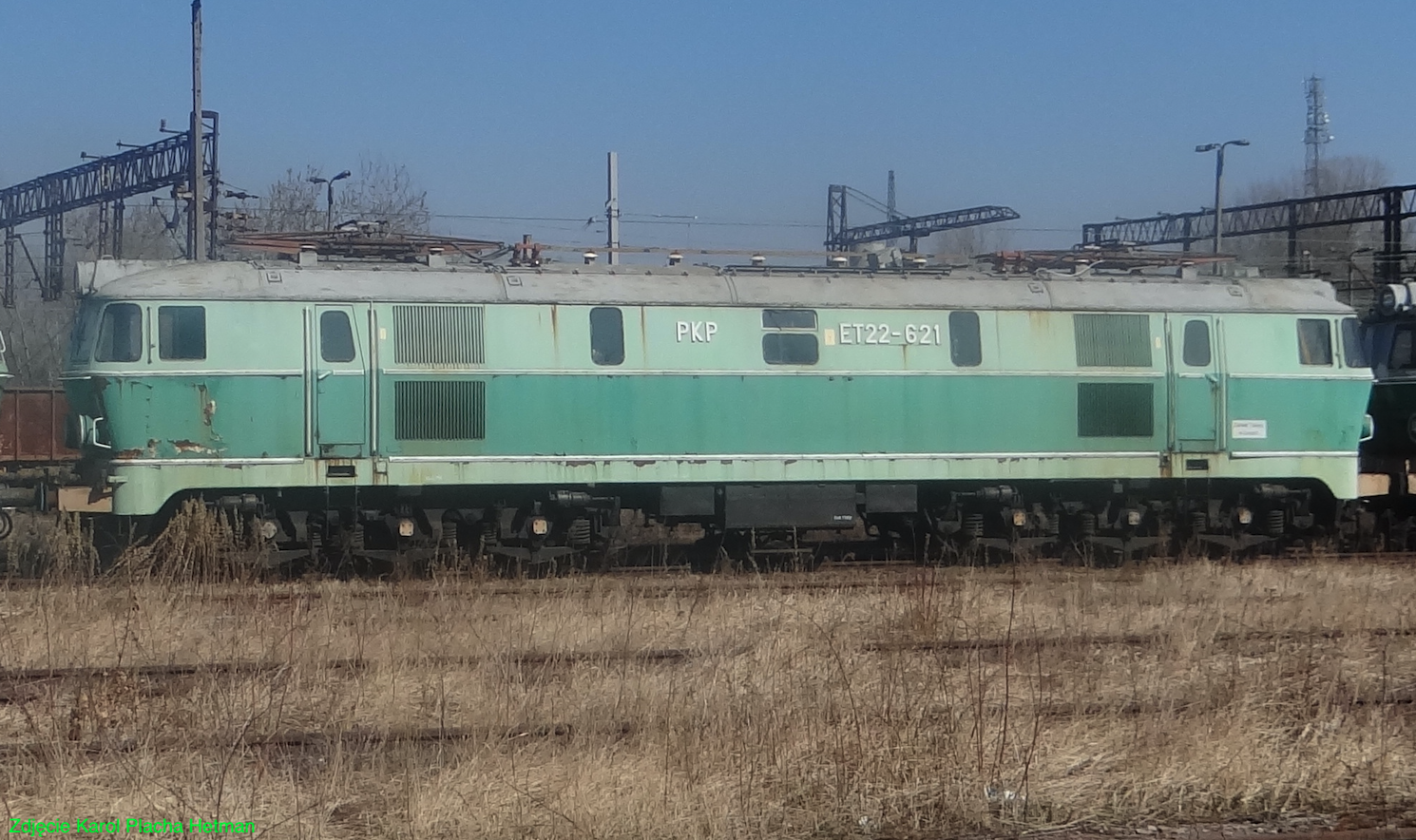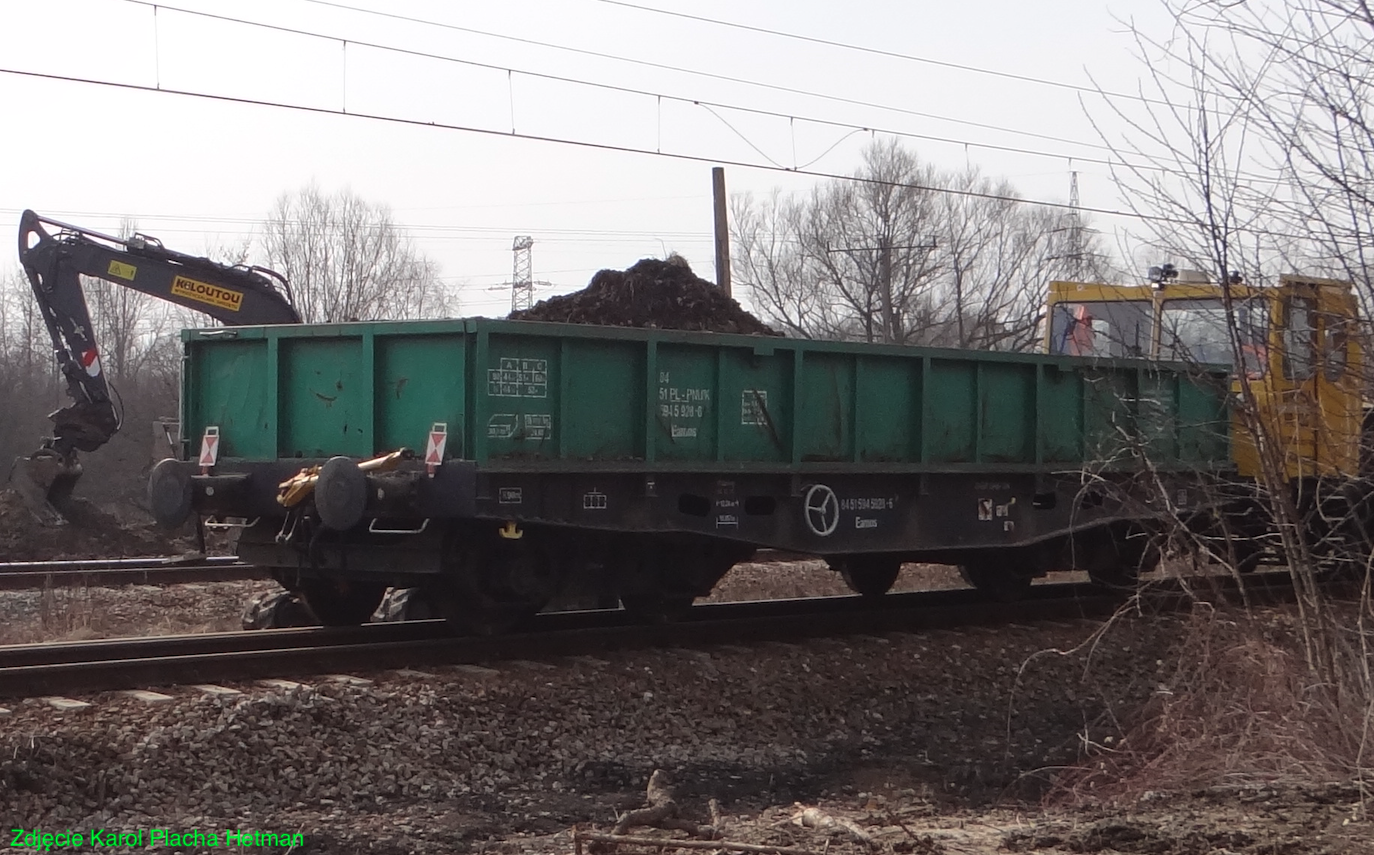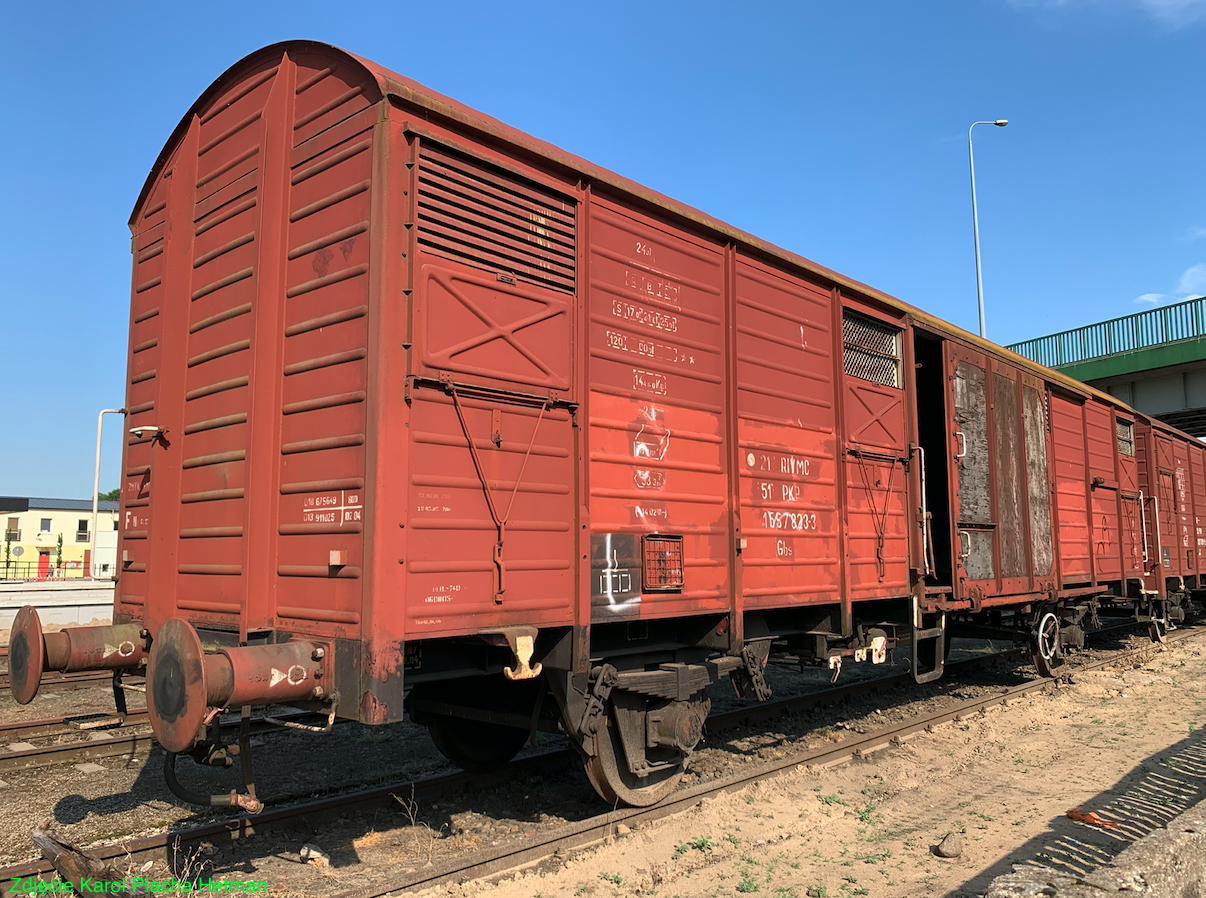Kraków 2024-01-16
Military trains in the times of the Polish People's Republic.
Already in the second half of the 19th century, it was noticed that large military units could be quickly moved by rail. For this reason, the Muscovite state blocked the development of railways in the Russian partition, specifically in the Kingdom of Poland, completely dependent on the Muscovites. In Russia, only meridional lines were built, and a non-standard rail gauge was used. If railway lines were built, they connected fortresses, for example Iwanogród (Dęblin) with Modlin. At the same time, Prussia and Austria-Hungary were developing their railway network and experiencing great economic development.
The Great World War confirmed the importance of the railway network in the tactics of warfare. Thanks to the railway, during the Polish-Soviet War, the Kościuszko Squadron had air support in the form of a train.
Until now (2024), rail transport is a stimulator of economic development. Rail transport is ten times cheaper than air transport and four times cheaper than road transport. Trains have a large capacity and enable the transportation of large-sized goods. You can transport goods of various types and sizes. The railway has a wide range of wagons. Compared to other means of transport, rail transport is often more environmentally friendly. Trains are efficient in terms of energy consumption for transporting a unit of cargo or a passenger. Rail transport is considered one of the safest means of transport. The rails offer a stable and dedicated route, which reduces the risk of collisions with other vehicles. Additionally, trains are usually less susceptible to weather-related accidents compared to road or air transport.
Echelon in the times of the Polish People's Republic.

The word Echelon has several meanings. The word itself comes from the French "echelon". Formerly, in the armies of Western Europe, it meant an attack formation of troops, which resembles a staircase. Each subsequent unit is moved back a few ranks and moved to the side. Until the 30s of the 20th century, every combat grouping of infantry soldiers, tanks, ships and even planes was called an echelon. In Soviet Russia, in the years 1917-1921, echelons were transports of supplies for the army by trains or horse-drawn carriages. Therefore, in the times of the Polish People's Republic, military railway transport was called echelon.
In Polish nomenclature, echelon is the name of a military transport unit, such as a column of wagons, cars or railway wagons. In the times of the Polish People's Republic, the name echelon was used only for military railway transports. However, wheeled military transport (cars and trailers) was called a column.
Already in the 1950s, the Polish Army and the Polish State Railways established the rules for transporting military units by rail. The freight train, as an echelon, was planned long before the planned time of transport of the military unit. Typically, these transports were carried out as part of the transfer of a military unit from its place of permanent stationing to a training ground. There were also military trains that transported military equipment to military repair plants.
It was agreed that the train would consist of a specific number of wagons, the total length of which could not exceed 120 axles, i.e. 5 m per axle, i.e. 600 m. Their gross weight could not exceed 1,200 tons. These findings resulted from the length of railway sidings, at smaller stations and from the fact that railway routes had much lower load-bearing capacity.
401Z type wagon.
The basic echelon train included a 401Z type wagon, intended for transporting heavy vehicles, for example tanks, which is why it was popularly called a tank wagon. The wagon was developed in 1960 by the Central Design Office of the Rolling Stock Industry for civilian and military use.

The wagon consists of two two-axle bogies, a stand, which is a platform, and low sides. The wagon is designed to load goods weighing up to 60,000 kg. The 401Z type wagon was produced in three basic versions. The wagons were produced in the Ostrowiec Steelworks, and then in the Wagon Factory in Świdnica. Production lasted from 1961 to 1973. A total of 8,280 units were built, and a significant number of them were without sides. The sides are made of six elements. The front walls were foldable and created a bridge between the wagons. At the head ramps, entering vehicles could pass through all platforms. The floors were made of thick boards to which it was easy to nail chocks to block car wheels. The wagons have stanchions, foldable or retractable.
T-T data of the 401Z wagon:
Total length 12.24 m. Empty weight 19,500 kg. Payload: 60,000 kg. O-GP SAB + parking brakes. Two 1XT or 1XTa trolleys. Design speed 100 km/h.
Gms and Gbs type wagons.
The soldiers' echelons had Gms type wagons. The letter "G" stands for a covered wagon of normal construction. Letter "m" two-axle with a load length of up to 9.00 m. Letter "s" adapted to run at a speed of 100 km/h. The wagon is equipped with brakes. The Gbs type wagon has a 12.70 m long hold.

These wagons are made of metal and filled with boards. Later, grooved sheets were used. The wagons have two axles. They have large sliding doors on both sides. While the train was running, the doors were usually left open and a handrail was installed for safety. Inside, during the winter, a "Goat" coal stove was placed in the middle, and the exhaust gases were discharged through a metal chimney led through a hole in the roof. On either side of the end of the hold there were two large bunks, arranged in a tiered manner. 10 soldiers slept in each of them, on their own "mules" (a mattress, two blankets, a pillow with a pillowcase and two sheets). Plus all the soldier's personal equipment: satchel (backpack), rifle, gas mask, etc. The wagon had four small, closed windows, with bars, without windows, for ventilation of the wagon.
One Gms type wagon was intended for the field kitchen. Generally, soldiers received dry provisions for the journey. But black coffee or tea had to be boiled. In the 1980s, there were already canned dishes with the entire second course. Unopened canned goods were thrown into hot water and heated.
The wagon for officers.
It was a class 2 passenger carriage. Usually a HCP 111A type carriage. But there was a problem in winter. The echelons were pulled by freight locomotives that did not have a heating system. Neither steam nor electric. That's why it was cold in the carriage. Some of the staff took camp beds with them and spread them out in the freight wagons of their subordinates, where the "Kozy" stoves kept warm.

Locomotives.
The echelon trains were pulled by electric locomotives or diesel locomotives, depending on the railway route, with or without electric traction. Mainly electric locomotives were ET-21 (Pafawag) and ET-22 (201E Pafawag), and diesel locomotives were ST43 (060DA), SU45 (HCP 301D) and ST44 (ŁTZ M62).
In the times of the Polish People's Republic, the Polish State Railways ran 200-300 trains annually for the army, including up to 7,500 wagons. The Polish Army also had hundreds of kilometers of its own railway sidings, which were maintained by military units. Practically every airport, every training ground, every fuel depot; had several kilometers of its own sidings. All sidings were unelectrified and were operated only by diesel traction.
Written by Karol Placha Hetman
